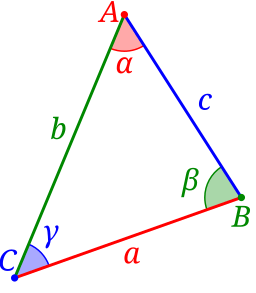What We Review
Introduction
Understanding the Law of Sines and Cosines is essential for solving triangle problems in AP® Precalculus. These laws help tackle real-world applications and are crucial to vector addition—a key concept in physics and engineering. Before diving into vectors, let’s explore these mathematical tools and their applications in geometry.
Understanding the Law of Sines
The Law of Sines helps solve triangles, especially when dealing with oblique triangles (those that don’t include a right angle). It states that the ratio of a side’s length to the sine of its opposite angle is constant for all three sides and angles.
\text{Law of Sines:} \quad \frac{a}{\sin A} = \frac{b}{\sin B} = \frac{c}{\sin C}When to Use the Law of Sines:
- When you know two angles and one side (AAS or ASA).
- When you know two sides and one opposite angle (SSA).
Example Problem: Solve for a missing angle in a triangle where (a = 7), (b = 9), and (\angle A = 30^\circ).
Solution:
- Set up the Law of Sines: \frac{7}{\sin 30^\circ} = \frac{9}{\sin B}
- Solve for (\sin B): \sin B = \frac{9 \times \sin 30^\circ}{7}
- Calculate (\sin B) using (\sin 30^\circ = 0.5): \sin B = \frac{9 \times 0.5}{7} \approx 0.643
- Find (\angle B) with (\sin^{-1}(0.643)), yielding (\angle B \approx 40^\circ).
Exploring the Law of Cosines
The Law of Cosines is useful for finding unknown sides or angles in triangles, particularly when given two sides and their included angle or all three sides.
\text{Law of Cosines:} \quad c^2 = a^2 + b^2 - 2ab \cos CWhen to Use the Law of Cosines:
- When you know two sides and the included angle (SAS).
- When you know all three sides (SSS).
Example Problem: Find the length of side (c) given (a = 5), (b = 6), and (\angle C = 60^\circ).
Solution:
- Set up the Law of Cosines: c^2 = 5^2 + 6^2 - 2 \times 5 \times 6 \times \cos 60^\circ
- Simplify and calculate: [c^2 = 25 + 36 - 60 \times 0.5][c^2 = 61 - 30 = 31]
- Find (c): c = \sqrt{31} \approx 5.57

Application of the Laws in Triangles
Sometimes both laws are applicable, particularly in solving complete triangles. Each law has strengths. For acute angles, both are reliable. The Law of Cosines directly handles obtuse angles.
Example Problem: Find all unknowns for (\triangle ABC) with (a = 8), (b = 6.5), and (\angle C = 70^\circ).
Solution:
- Use the Law of Cosines to find (c): [c^2 = 8^2 + 6.5^2 - 2 \times 8 \times 6.5 \times \cos 70^\circ][c \approx \sqrt{70.68} \approx 8.41]
- Apply the Law of Sines: [\frac{8}{\sin A} = \frac{8.41}{\sin 70^\circ}][\sin A \approx 0.89 \angle A \approx 62.87^\circ]
- Calculate (\angle B): \angle B = 180^\circ - 70^\circ - 62.87^\circ \approx 47.13^\circ
Introduction to Vectors
Vectors are fundamental in geometry and physics, representing quantities with both magnitude and direction. They are crucial for calculations involving displacement, velocity, and force.
Key Terms:
- Magnitude: The length of the vector.
- Direction: The angle at which the vector is oriented.
Vector Addition
Vectors can be added graphically using the tip-to-tail or polygon method, or algebraically with component-wise addition.
Parallelogram Law: Sum two vectors by forming a parallelogram, where the diagonal represents the resultant vector.
Example Problem: Add vectors (\mathbf{A} = (3, 4)) and (\mathbf{B} = (4, -1)).
Solution:
- Graphical Method: Draw (\mathbf{A}) and (\mathbf{B}) tip-to-tail; sketch the resultant diagonal.
- Algebraic Method: \mathbf{A} + \mathbf{B} = (3+4, 4-1) = (7, 3)
Dot Product of Vectors
The dot product is an operation producing a scalar, reflecting two vectors’ magnitude alignment. Based on the formulas used to find the angles between the vectors below, we can conclude that if the dot product is zero, then the vectors are perpendicular.
\mathbf{A} \cdot \mathbf{B} = a_1b_1 + a_2b_2Example Problem: Find the dot product of (\mathbf{A} = (2, 3)) and (\mathbf{B} = (4, 5)), and determine the angle.
Solution:
- Compute the dot product: \mathbf{A} \cdot \mathbf{B} = 2 \times 4 + 3 \times 5 = 8 + 15 = 23
- Calculate magnitudes: [|\mathbf{A}| = \sqrt{2^2 + 3^2} = \sqrt{13}][|\mathbf{B}| = \sqrt{4^2 + 5^2} = \sqrt{41}]
- Use the formula to find the angle between the vectors: [23 = \sqrt{13} \times \sqrt{41} \times \cos \theta][\cos \theta = \frac{23}{\sqrt{533}} \quad \Rightarrow \quad \theta \approx 5.0^\circ]
Relationships Between Vectors and Triangles
By using the Law of Sines and Cosines, understanding triangles becomes easier even within the realm of vectors. For instance, the Law of Cosines can identify angles between vectors using components.
Example Problem: Determine the angle between vectors (\mathbf{A} = (3, 2)) and (\mathbf{B} = (1, -2)).
Solution:
- Use the dot product: \mathbf{A} \cdot \mathbf{B} = 3 \cdot 1 + 2 \cdot (-2) = 3 - 4 = -1
- Find magnitudes: [|\mathbf{A}| = \sqrt{3^2 + 2^2} = \sqrt{13}][|\mathbf{B}| = \sqrt{1^2 + (-2)^2} = \sqrt{5}]
- Use the formula to find the angle between the vectors: [-1 = \sqrt{13} \cdot \sqrt{5} \cdot \cos \theta][\cos \theta = \frac{-1}{\sqrt{65}} \quad \Rightarrow \quad \theta \approx 97.1^\circ]
Quick Reference Chart
| Term | Definition |
| Law of Sines | A formula to find missing angles or sides in triangles: (\frac{a}{\sin A} = \frac{b}{\sin B} = \frac{c}{\sin C}) |
| Law of Cosines | A rule to determine angles or sides in a triangle: (c^2 = a^2 + b^2 - 2ab \cos C) |
| Vector | A quantity with both magnitude and direction. |
| Dot Product | A scalar product reflecting the magnitude alignment: (\mathbf{A} \cdot \mathbf{B} = a_1b_1 + a_2b_2) |
| Magnitude | The length of a vector. |
Conclusion
Mastering the Laws of Sines and Cosines enables tackling complex triangle problems, providing wider insights into vector addition. These tools lay the groundwork for advanced studies in physics and engineering. Embrace practice to enhance understanding and readiness for the AP® Precalculus exam—ensuring confidence in assessments.
Sharpen Your Skills for AP® Precalculus
Are you preparing for the AP® Precalculus exam? We’ve got you covered! Try our review articles designed to help you confidently tackle real-world math problems. You’ll find everything you need to succeed, from quick tips to detailed strategies. Start exploring now!
Need help preparing for your AP® Precalculus exam?
Albert has hundreds of AP® Precalculus practice questions, free response, and an AP® Precalculus practice test to try out.









